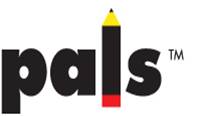
PALS was designed to be flexible, responsive, and accessible. PALS included allowable practices for administration that were built into the assessment. Teachers were able to use these allowable practices with any student during a PALS administration. There were no time limits for any of the PALS tasks. Students with disabilities accessed PALS through these allowable practices similar to their non-disabled peers. The use of these allowable practices did not require an IEP team meeting or IEP documentation.
Because PALS was a tool to guide instruction, accommodations and modifications were considered supplementary aids, services, and supports provided to or on behalf of the student. Any accommodations and modifications used during a PALS administration were to be consistent with those that were provided during a student’s daily instruction and generally should not have been introduced for the first time for the sake of screening.
Accommodations and modifications beyond allowable practices were to be documented on I-9, IEP Summary, Supplementary Aids and Services. Supplementary aids and services included frequency and amount and be stated so that the level of the LEA’s commitment of resources was clear to parents and other IEP team members. The statement were to be appropriate to the specific service and stated in a manner that could be understood by all involved in developing and implementing the IEP.
Allowable Practices
Allowable practices are support options that were already built into the design of PALS, which enabled optimal access for all students including students with disabilities. The use of these practices did not change the construct being measured and did not require documentation in the IEP. Educators were instructed to always consider the use of allowable practices prior to considering the need for accommodations or modifications for students with disabilities. PALS allowable practices that were available to ALL students, including students with disabilities, included:
- Multiple testing sessions
- Breaks between tasks
- Scheduling assessment for optimal times
- One-on-one administration
- Small-group administration
- Assessing in an alternative location (e.g. special education room, library, etc.)
- Repeating directions, repeating practice items
- Students repeat directions, checking for understanding
Accommodations
Accommodations also do not change the construct being measured, but rather allow some students with disabilities equitable access to the material being presented. Accommodations are designed to be consistent with day-to-day instructional methods. Accommodations were required to be documented in the student’s IEP. Below are examples of accommodations that were used for students with disabilities without risk of invalidating PALS scores:
- Visual aid (e.g., ruler, magnifier)
- Auditory aid (e.g., FM system, sound field system)
Modifications
The use of modifications was addressed by a student’s IEP team after careful consideration of both allowable practices and accommodations. Modifications change what is being assessed and result in a non-standardized administration. Modifications should be consistent with day-to-day instructional methods and should not be first introduced during screening. It is likely that the use of modifications significantly limited information obtained during screening to guide instructional planning. Modifications were to be documented in the student’s IEP. Below are examples of modifications that were used for students with disabilities, as determined by the individual student’s IEP team.
- Assistive technology for non-verbal students
- Braille text and altered instructions
- American Sign Language and altered instructions
- Use of a scribe
- Allowing non-verbal students to identify letters of the alphabet by pointing rather than vocalizing